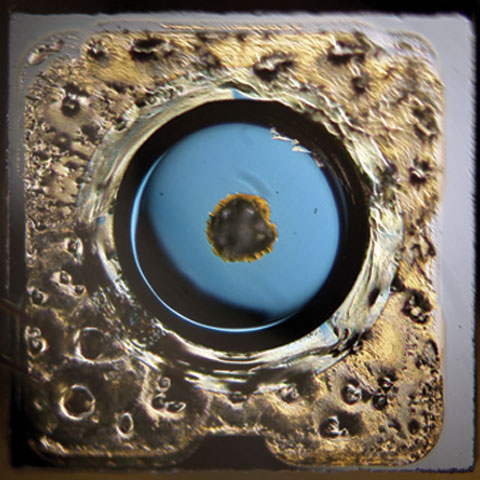Quantum Cyberattack

An avalanche photodiode that has been damaged by a high-power laser. These photodiodes form part of a quantum key distribution system and could fall victim to a malicious attack.
Image Credit: Audun Nystad Bugge et al./PRL/APS
March 13, 2014
As scientists better understand the strange world of quantum mechanics, many are attempting to capitalize on the science to make faster, more secure computers. One such security application, called quantum key distribution, allows two parties to communicate privately while also detecting if and when an eavesdropper tries to intercept their messages.
While many traditional security protocols today rely on the immense computing power necessary to crack the keys that encrypt information online, but that security may fall flat when quantum computers hit the scene.
Thus, a new form of security may be necessary — one that relies on quantum mechanics. Quantum key distribution aims to heighten security dramatically by relying on the polarization of individual photons to transmit keys. Once photons are polarized, they'll exist in a quantum state that cannot be measured without disturbing the system. This allows for the detection of any unwanted eavesdroppers.
But this system still has its pitfalls, as demonstrated by the photo above.
In a recent experiment, an international group of scientists found ways to damage the photodiodes necessary to make the system work. Because the system must allow a small amount of error due to hardware limitations, a hacker could damage that hardware and send a fake signal that appeared authentic to the receiver.
For their research, the team shot photodiodes with a high-power laser which increased their margin of acceptable error. With the hardware weakened, a hacker could slip in a fake message while extracting the original message.
The photo above shows an advanced form of damage inflicted on a photodiode. Take notice of the dark hole in the center: that's a hole that blew all the way through the chip.














